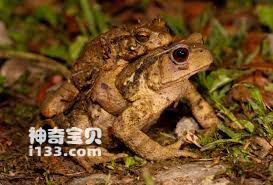Toads are relatively special breeding objects, and special attention needs to be paid to their required environment and feeding conditions. The following is a detailed introduction to toad farming:

Habitat:
Humidity: Toads are humidity-sensitive animals and require a high-humidity environment, usually within the range of 60%-80%.
Temperature: Toads like a cooler environment, and the most suitable temperature is 15-25 degrees Celsius.
Habitat layout:
Water: Provide a clean water source within the habitat so that the toads have ready access to it, but avoid drowning.
Refuge: Provide some refuge within the habitat, such as bark, rocks, or plants, for the toad to rest and hide.
feed:
Food: Toads mainly feed on insects, including maggots, ants, slugs, flying insects, etc. Make sure to provide fresh and nutritious food.
Frequency of feeding: Breeders should control the toad's food intake and avoid overfeeding. Feeding is usually done every 2-3 days.
Veterinary Health Care:
Check health: Regularly check your toad's physical condition, including its skin, eyes and behavior, to make sure it's free of disease or parasites.
Disease treatment: For toads that appear abnormal, it is necessary to contact the veterinarian in time and receive corresponding treatment.
Socialize and observe:
Raising alone: It is best to raise toads individually to avoid mixing different types of toads.
Observation and interaction: Regularly observe the behavior and appetite of toads so that abnormalities can be detected in time and corresponding measures can be taken.
legality:
Toad farming needs to comply with relevant local laws and regulations to ensure legal farming.
It should be noted that toads are highly toxic. When raising toads, avoid contact with their skin secretions and body fluids, and use protective measures such as gloves when cleaning the habitat and feeding.
animal tags: toad
We created this article in conjunction with AI technology, then made sure it was fact-checked and edited by a Animals Top editor.